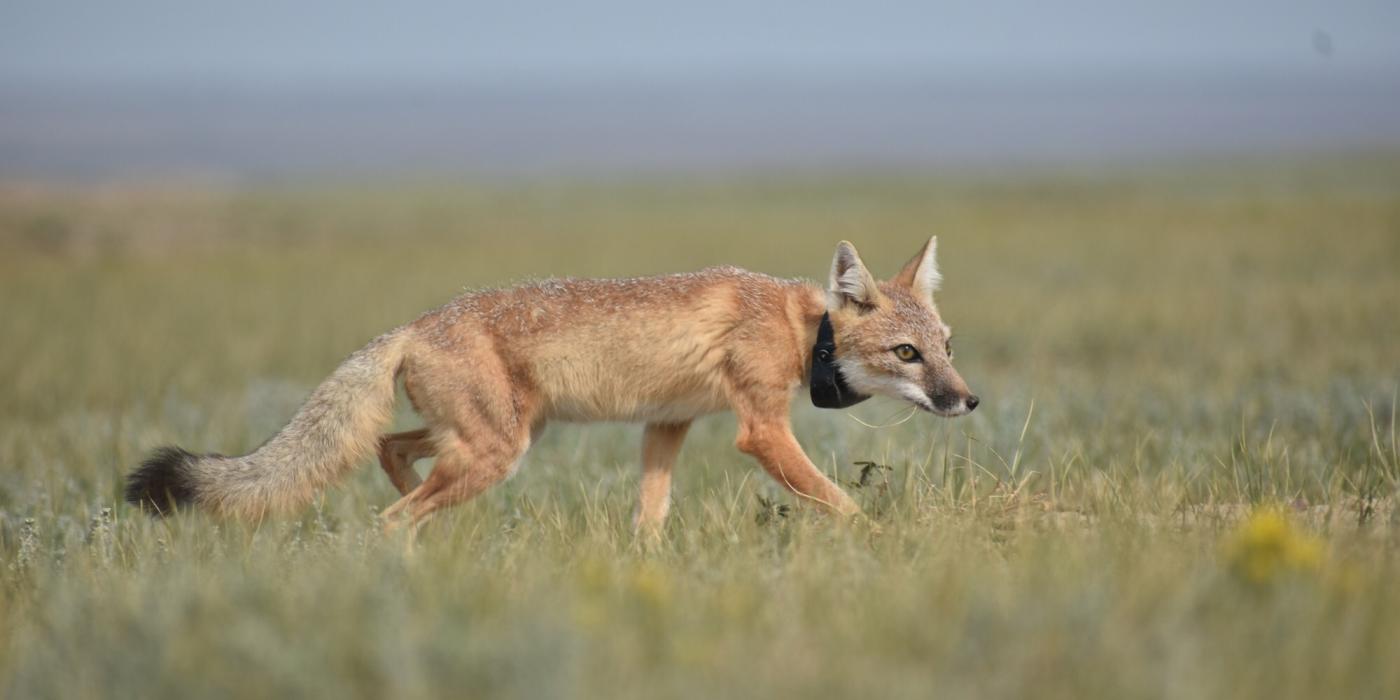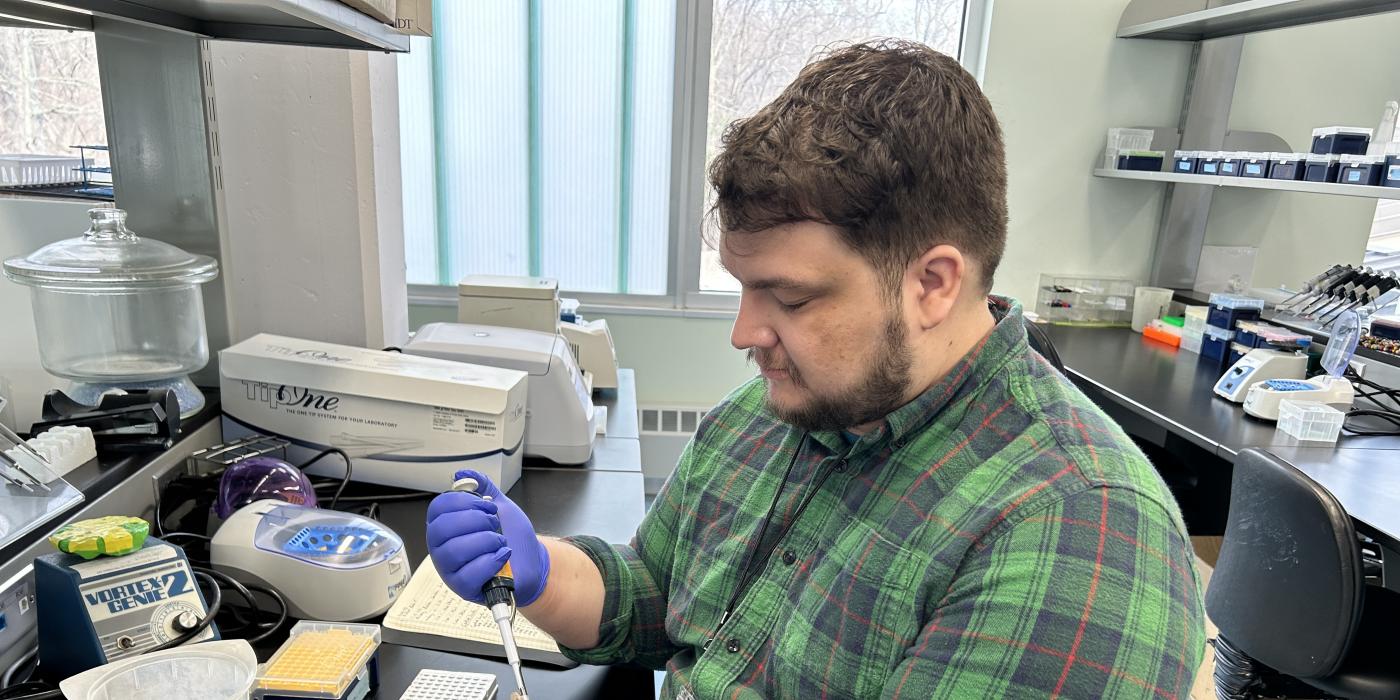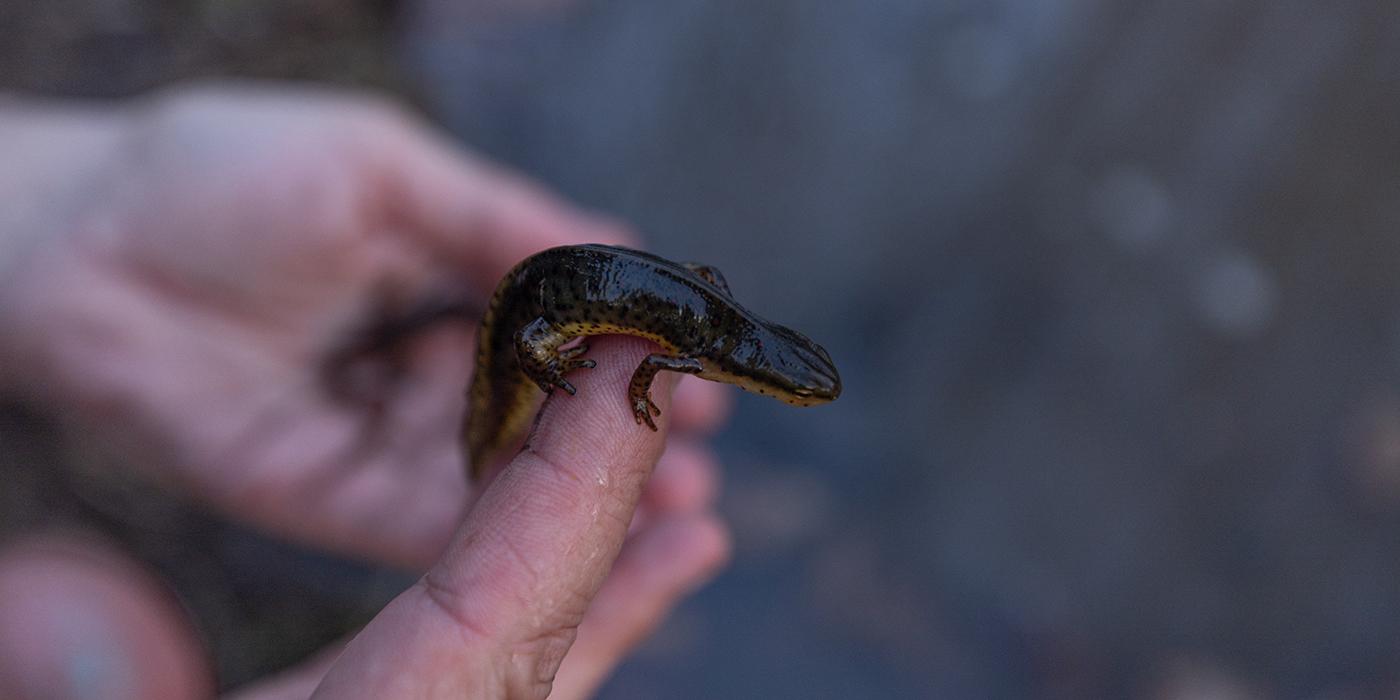Why I'm Studying Frog Slime
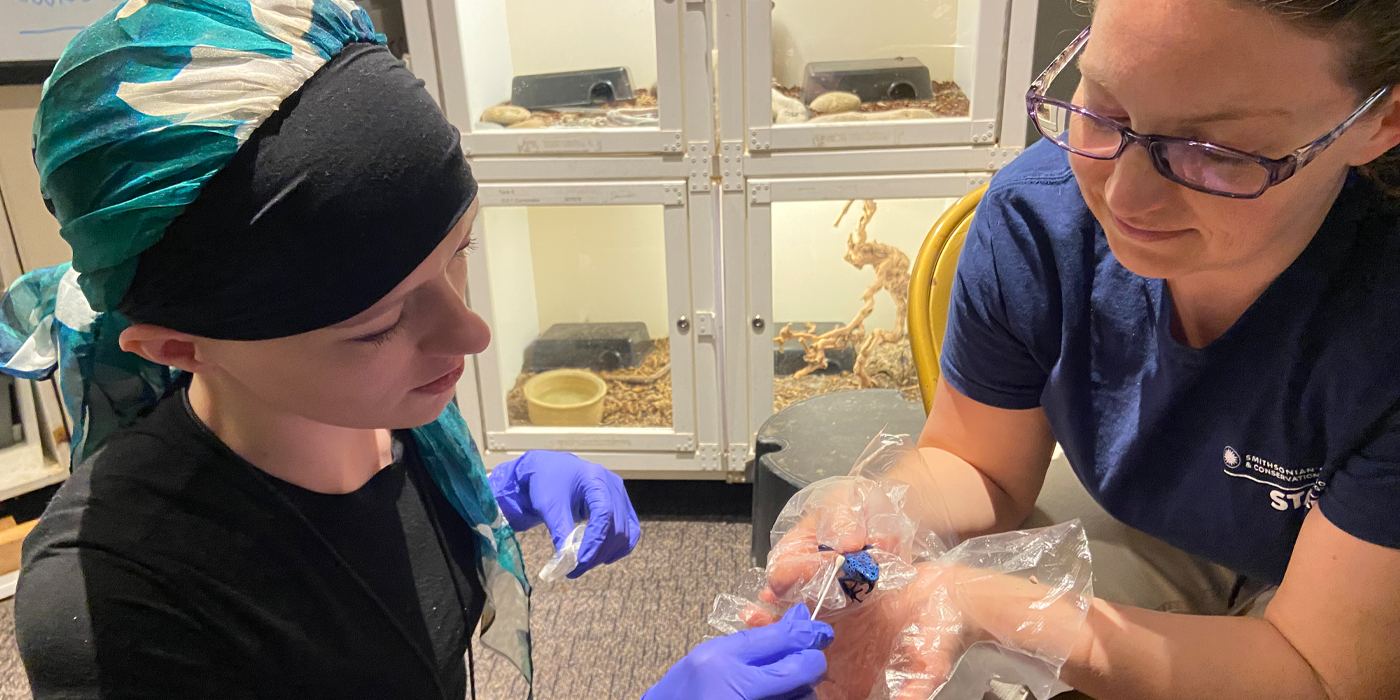
As a scientist and intern at the Smithsonian’s National Zoo and Conservation Biology Institute’s Center for Conservation Genomics, my focus is on slime—specifically amphibian slime, and the creatures within.
What?! Things living in slime? On frogs? Yes, it’s true! Have you ever wondered what the difference between a reptile and amphibian is? Well, if you’ve ever picked up a frog or touched a lizard, you may have noticed they feel different. Skin texture is a key difference between reptiles and amphibians. Reptiles typically have rough and scaly skin while amphibians have moist and slimy skin. This moist and slimy skin is how amphibians, frogs, salamanders and caecilians breathe—some don’t even have lungs at all!
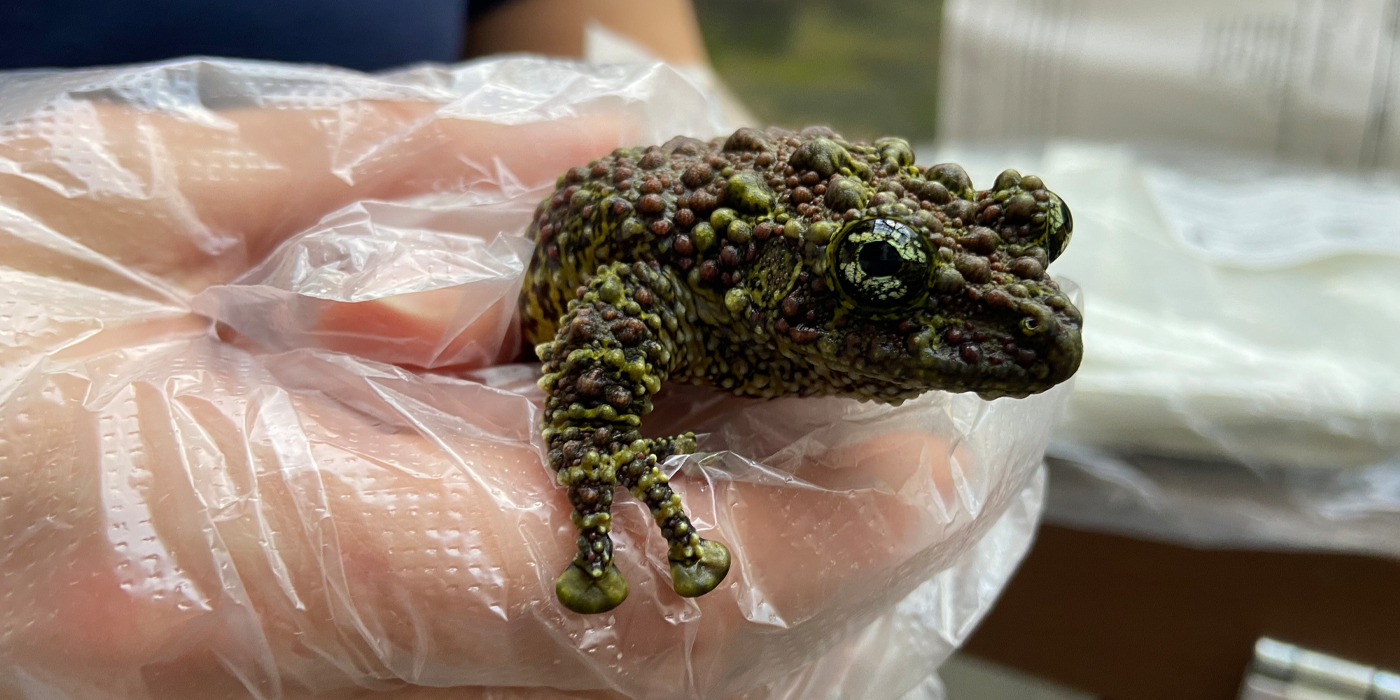
Gloves are often necessary when handling frogs.
So, the sliminess on amphibians is more than just goop; it’s basically how these animals survive. The slime is also a great environment for bacteria and microscopic fungi to live. This community of microorganisms is called a microbiome. These microbiomes are extremely beneficial, and can defend an animal against disease, infection and more. However, anything that messes with this slime, messes with the ability of an amphibian to breathe.
In fact, a deadly fungus called chytridiomycosis, commonly known as amphibian chytrid, is killing thousands of amphibians across the globe by doing just that. A decline of amphibian species in an environment causes a lot of issues. Beyond serving as an important food source for larger animals, amphibians act as nature’s pest control by eating all sorts of insects (including ones that are harmful to humans, like mosquitoes). In some ecosystems, the amphibian population is greater than all other vertebrate animal species present. The health of amphibians can alter an entire ecosystem very quickly.
Because my colleagues and I work at a zoo with a large amphibian collection, we have access to a unique collection of slime—hundreds of amphibian species representing 250 million years of evolution are at our disposal. These amphibians live at the Reptile Discovery Center and Amazonia. If we could understand more about amphibians’ microbiomes, it might be the key to saving species from threats like chytrid.
In conservation genomics, we study the building blocks of life, like DNA. As you probably know from TV crime shows like "CSI," scientists can extract DNA from a variety of organic materials, including bones, blood, hair, and skin. We can do that with conservation, too—only instead of using DNA at crime scenes to identify culprits and victims, we analyze the DNA of animal species to help save them. By studying the DNA of the tiny, microscopic creatures that live in amphibian slime, we can find out more about how they help amphibians survive, live, and breathe. So, if we want to save amphibians, we’re going to need slime... and lots of it.
Collecting slime is just what it sounds like, with a few extra steps to ensure the amphibians—frogs, in this case—aren’t stressed. First, we put on our gloves and pick up the frogs. Next, we take a sterile cotton swab and gently roll it on the frog's skin to collect a small sample of slime. Then, we place the frog in a small bag of water and wait for the slime to slough off. And once that's done, we can use the samples of this “bath” water to create experiments to measure the slime’s ability to ward off the chytrid fungus.
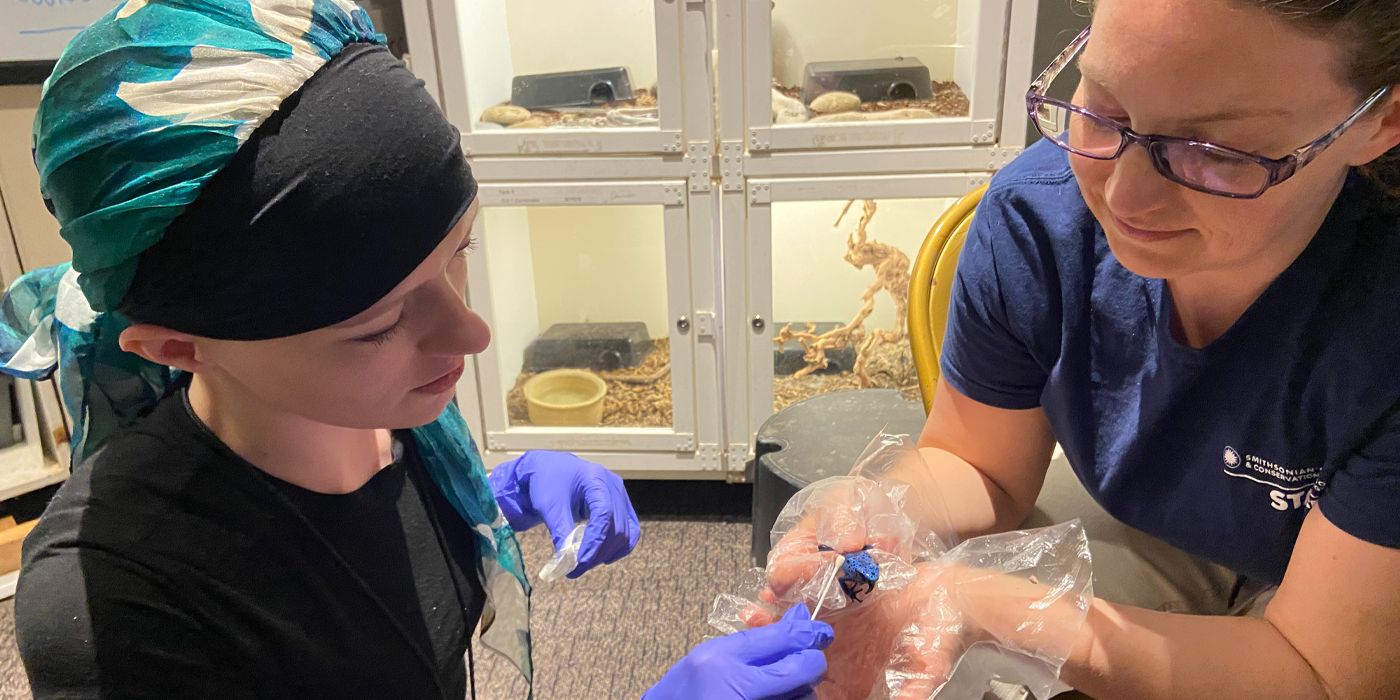
Smithsonian researcher and intern Lindsey Gentry, left, works with a colleague to collect a slime sample from the skin of a mossy frog.
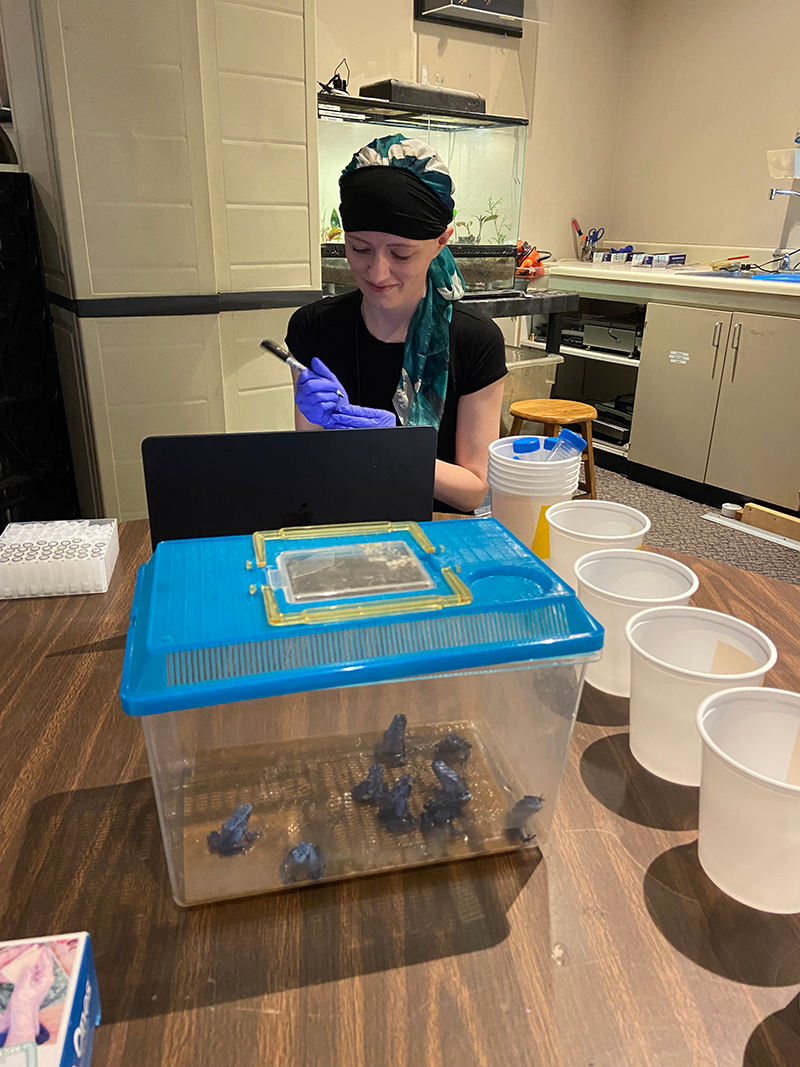
Over 100 frogs will need their slime samples collected.
The first time I swabbed a frog, I was nervous one might slip out of my hands. Luckily, our zookeeper, Sara, had a lot of experience with holding frogs. I quickly realized how easy it was to swirl and swipe the swab all over their bodies (remember getting the COVID-19 nose swabs? Same concept, but on skin instead!) I was surprised how unfazed the frogs seemed, except for one big beefy-looking moss frog who knocked a swab out of my hand with a well-placed kick. After we collected our slime samples, we brought them back to the lab, where they'll be stored until we're ready to analyze them and test them against chytrid fungus. But for now, we’re still collecting samples, since it takes about 30 minutes per bath per frog, and we are sampling more than 100 frogs.
The hope is that if we can better understand amphibian microbiomes, we can find ways to save them. Maybe one species has a microbiome less susceptible to chytrid? Perhaps a compound in the slime can ward off chytrid? As scientists, we’re only now beginning to understand the importance of microbiomes and how they can shape conservation science. But, we are finding that both the microbiome and compounds in amphibian slime do matter for chytrid susceptibility. Our sampling of the amphibians at the Zoo will help us learn a great deal more about protective microbiomes and defensive compounds across the amphibian tree of life. For me, slime is the key to exploring this exciting new frontier.
“Microbes Matter” is a series from Smithsonian’s National Zoo and Conservation Biology Institute scientists all about how the study of tiny microbes can have big, beneficial impacts on caring for zoo animals and saving species in the wild. Stay tuned for more stories on why microbes matter!
